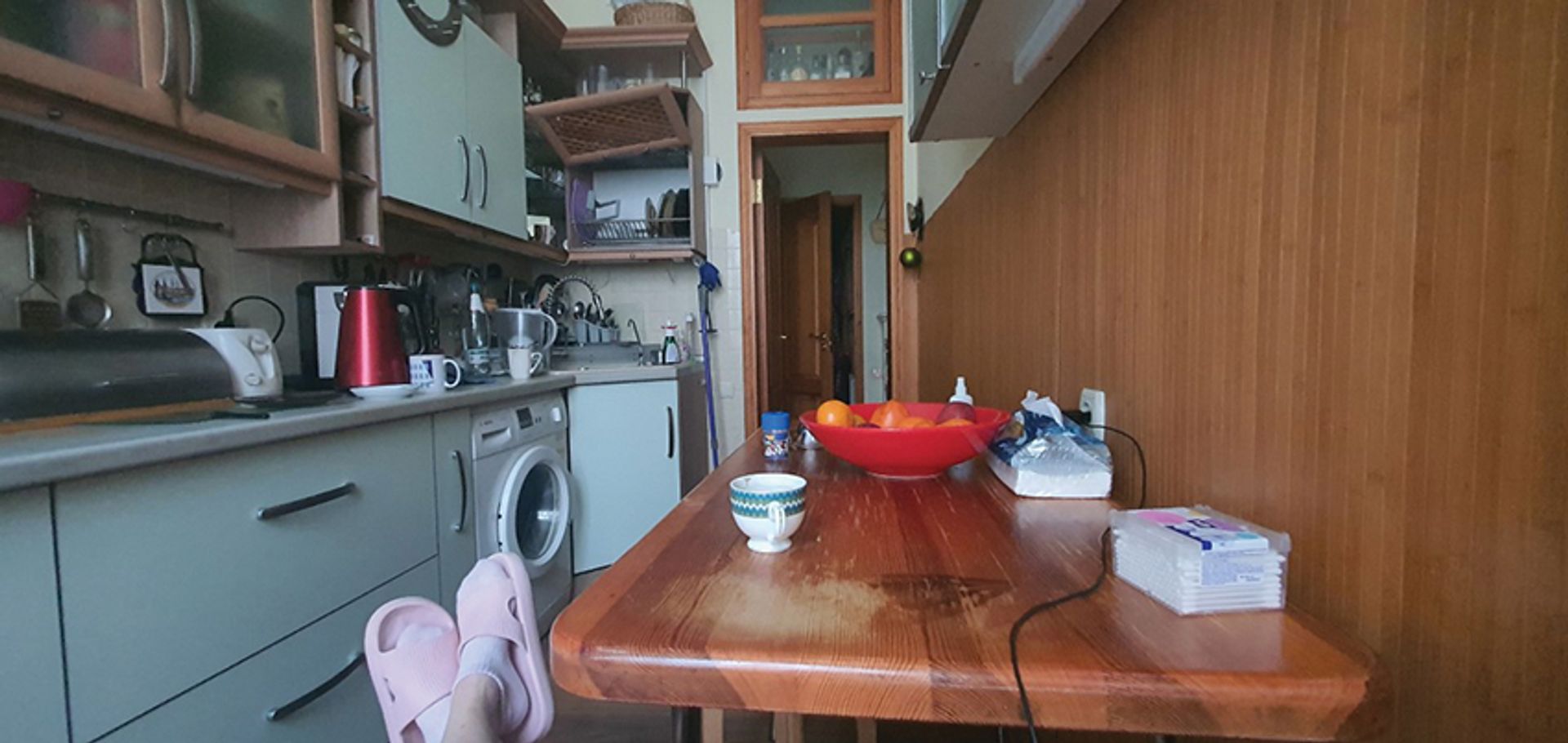Every day I open Facebook and see the same picture: Hanna Sherman, the editor-in-chief of Antiquarian magazine, photographs her feet in cosy slippers against the backdrop of an ordinary Kyiv kitchen.
Every morning she posts a new snapshot, taken from about the same angle. I already recognise the items in Hanna’s kitchen. A table, a TV above it, a chair with a curved back. These are very banal but at the same time priceless shots. Perhaps this is the best photo series of 2022.
There is a war in Ukraine, an empty Kyiv is surrounded by Russian troops. Hanna’s photographs are a powerful message to the whole world: “I stayed in my hometown, a new morning has come, I am alive, and my house is still intact.” I never thought that photos of someone’s slippers could move me to tears.


When attacking Ukraine, Russian president Vladmir Putin was counting on a quick victory. After it turned out that the Ukrainians were determined to protect their homeland, Russia began to take revenge on the recalcitrant country. The destruction of museums, theatres, churches, real terror in Mariupol, Sumy, Chernihiv, and the suburbs of Kyiv—today the crisis of most of the systems that ensured the relative stability of our planet after the Second World War is becoming obvious. This is frightening, although modern media have made us accustomed to melancholic contemplation of disasters.
However, the war in Ukraine is not only bad news. The first weeks after the Russian invasion have been a time of unprecedented mobilisation of Ukrainian society and unique international solidarity towards Ukrainians. Ukrainian art workers are at the forefront—in the literal and figurative sense of the word.
The centre of cultural gravity has moved to Lviv, in western Ukraine. In peacetime, there are many tourists in the city, but today all those who do not want to go further west are moving here en masse from the war. Those who can’t run further also settle here—in a time of wartime, men are not allowed out of the country.
There are so many refugees, from all over Ukraine, and foreign journalists in the city that the prominent gallery owner and curator Pavlo Gudimov has organised special city tours. The project is called Lviv Meets: Art, Walks, Communication.
The provision of cultural leisure during the war has its challenges. Where to hide sightseers during an air raid? Fortunately, in Lviv there are bomb shelters at every turn. “We are in a good springtime mood, despite the bombed-out aircraft repair plant in the city this morning,” Pavlo writes to me.
Most of Lviv’s cultural institutions have been temporarily repurposed as refugee reception centres. Photos of theatres, where the auditoriums are occupied by endless rows of beds, go viral. Having recovered from the shock of the first days of the aggression, art workers are beginning to plan emergency exhibitions to provide moral support to refugees.
Territory of Terror Museum
The youngest museum director in Lviv is Olha Honchar who became head of the Territory of Terror Museum in 2017. Olha was only 24, and many doubted whether she would be able to lead an institution, especially one such as this. This memorial museum of totalitarian regimes is dedicated to the terrible pages of mid-20th century history. Originally a Jewish ghetto in 1941-43, and then a Soviet transit prison in 1944-55, the Territory of Terror is today one of the most dynamic Ukrainian museums, thanks to Olha’s efforts.
Since the war started, Olha has won emergency aid for the Territory of Terror from the Swiss Aliph Foundation, which specialises in the protection of cultural heritage in conflict zones. It has purchased the essentials for the museum: fireproof cabinets, packaging materials.
In the first days after the invasion, Olha began calling the directors of small provincial museums. It turned out that most museum employees had not received their salaries. People found themselves not only in a war zone, but also without means of subsistence. Thus, one of the most important cultural initiatives was born, the Museum Crisis Centre. Olha’s idea was immediately supported by private foundations, as well as the European Commission. Its first project is called #Quick_museum_help and provides targeted operational funding to the employees of small regional museums.
Literally on the eve of the war, the Kyiv journalist and art manager Oksana Semenik, together with the independent art director Sasha Bychenko, was going to launch her own art magazine. The Russian invasion found Oksana in the quiet and safe Kyiv suburb of Bucha.
Who would have thought that in just a few days it would be Bucha that would turn into hell on earth? Surrounding the town, Russian troops held civilians hostage for weeks. Oksana spent 15 days in a bomb shelter. The last few days were especially tough, without food, mobile connection or heating.
It was in this basement that Oksana and her boyfriend, the photographer Alexander Popenko, decided to get married. Realising they couldn’t last long without food, they decided to break free. Together with a column of civilians, they walked 22km in the freezing cold to get out of the surrounded town. “Dudes, I literally walked to Kyiv carrying a cat, through Russians, and survived in Bucha. If you want to give me a job, you can trust me, lol,” Oksana tweeted as she reached safety.
Today, she writes articles and plans new projects. “I don’t want to think that we are refugees or internally displaced persons. I like to think that we just took very few things and went to visit places,” she says.
Ukrainian art workers have faced an unprecedented disaster, but they have not lost their humour and look to the future with hope. How many bombs does it take to destroy a culture? Culture is alive as long as there are people ready to defend it.
• Alisa Lozhkina is a Ukrainian art writer and curator, currently based in the US. Published courtesy of The Art Newspaper


Leave a Reply